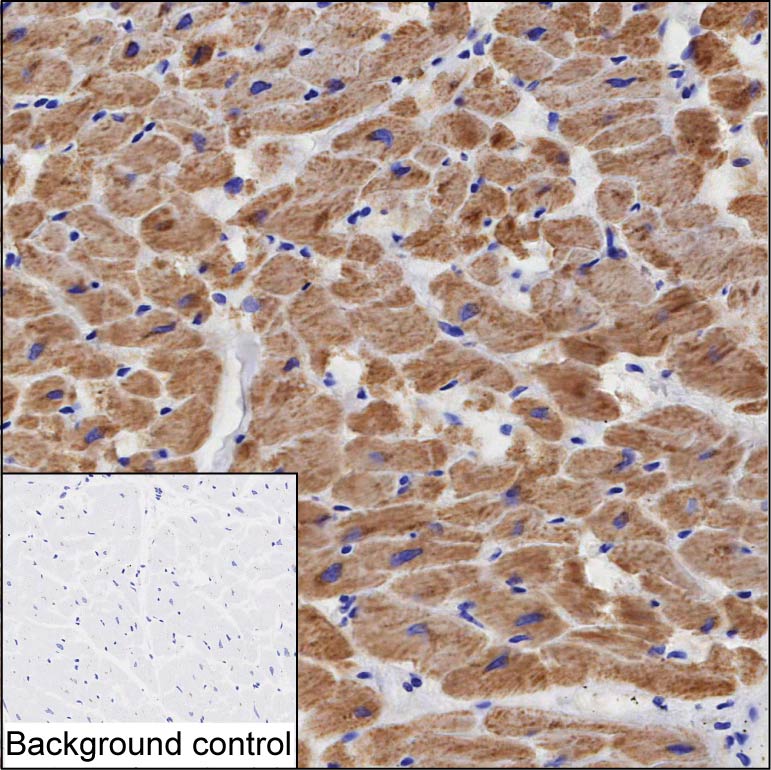
| WB | 咨询技术 | Human,Mouse,Rat |
| IF | 咨询技术 | Human,Mouse,Rat |
| IHC | 1/50-1/100 | Human,Mouse,Rat |
| ICC | 技术咨询 | Human,Mouse,Rat |
| FCM | 咨询技术 | Human,Mouse,Rat |
| Elisa | 1/10000 | Human,Mouse,Rat |
| Host/Isotype | Mouse IgG1 |
| Antibody Type | Primary antibody |
| Storage | Store at 4°C short term. Aliquot and store at -20°C long term. Avoid freeze/thaw cycles. |
| Species Reactivity | Human |
| Immunogen | Purified recombinant fragment of human NPPC |
| Formulation | Purified antibody in PBS with 0.05% sodium azide |
+ +
以下是3-4条与Glucose Transporter GLUT4抗体相关的参考文献及简要摘要:
1. **文献名称**:*"Cloning and characterization of an insulin-regulated glucose transporter from rat adipose tissue"*
**作者**:Birnbaum, M. J.
**摘要**:该研究首次克隆了大鼠脂肪细胞中的GLUT4基因,并通过特异性抗体验证了GLUT4蛋白在胰岛素刺激下的细胞膜转位,揭示了其在葡萄糖摄取中的关键作用。
2. **文献名称**:*"Immunocytochemical localization of the insulin-regulatable glucose transporter in rat adipose and muscle tissues"*
**作者**:James, D. E., et al.
**摘要**:利用GLUT4特异性抗体,通过免疫组化和亚细胞分离技术,证明GLUT4在基础状态下主要位于细胞内囊泡,胰岛素刺激后显著富集于质膜,阐明了其动态分布机制。
3. **文献名称**:*"AS160 regulates insulin-stimulated glucose uptake in adipocytes"*
**作者**:Huang, S., et al.
**摘要**:通过Western blot和免疫沉淀技术结合GLUT4抗体,研究发现AS160蛋白通过调控GLUT4囊泡的膜融合影响胰岛素介导的葡萄糖转运,揭示了信号通路中的新靶点。
4. **文献名称**:*"Insulin-stimulated GLUT4 storage vesicle fusion with the plasma membrane in 3T3-L1 adipocytes"*
**作者**:Lizunov, V. A., et al.
**摘要**:采用高分辨率成像技术和GLUT4抗体标记,实时观察了胰岛素刺激下GLUT4囊泡与质膜的融合过程,为GLUT4动态转运提供了可视化证据。
以上文献均涉及GLUT4抗体的应用(如Western blot、免疫荧光、亚细胞定位),并聚焦于GLUT4在胰岛素信号通路中的功能与调控机制。
The Glucose Transporter GLUT4 (SLC2A4) is an insulin-regulated transporter primarily expressed in adipose tissue and skeletal/cardiac muscle, where it plays a critical role in postprandial glucose uptake. Unlike other GLUT isoforms, GLUT4 resides in intracellular vesicles under basal conditions and translocates to the cell membrane upon insulin stimulation or muscle contraction. This dynamic trafficking mechanism makes it a key regulator of systemic glucose homeostasis.
Antibodies targeting GLUT4 are essential tools for studying its expression, localization, and trafficking in metabolic research. They are widely used in techniques like Western blotting, immunofluorescence, and immunohistochemistry to quantify GLUT4 levels in cell/tissue lysates or visualize its subcellular distribution. Validated antibodies help investigate GLUT4 dysregulation in insulin resistance, type 2 diabetes, and obesity models.
High-quality GLUT4 antibodies typically recognize specific epitopes in cytoplasmic N- or C-terminal domains, distinguishing GLUT4 from other GLUT family members. Researchers should verify antibody specificity using appropriate controls (e.g., knockout tissues) and consider species reactivity when designing experiments. Both monoclonal and polyclonal formats are available, with selection depending on application requirements. These reagents continue to advance our understanding of glucose metabolism disorders and potential therapeutic interventions targeting insulin signaling pathways.
×